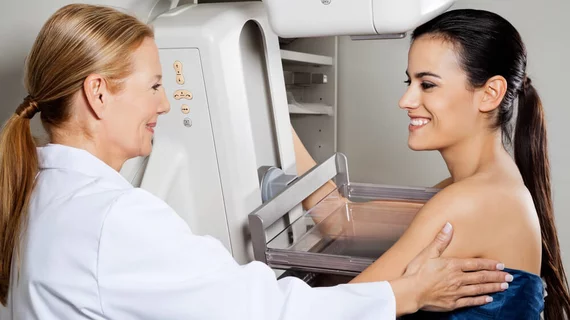When using digital breast tomosynthesis (DBT) for screening mammography, radiologists can reduce recall rates by comparing their results with prior mammograms, according to a new study published in the Journal of the American College of Radiology.
The authors studied EHR data for all nonbaseline screening mammograms at their institution from Dec. 1, 2012, to Dec. 31, 2013. More than 8,000 mammograms were performed using a combination of full-field digital mammography (FFDM) and DBT, and more than 1,000 were performed using FFDM only. For the DBT group, 381 patients did not have prior mammograms available when the initial mammogram was performed, but there was a retrieval rate of more than 78 percent. For the FFDM only group, 220 patients did not have prior mammograms available when the initial mammogram was performed, but there was a retrieval rate of more than 82 percent.
Overall, comparing the screening mammogram with prior mammograms negated the need for recall for more than 67 percent of patients from the DBT group and for more than 55 percent of patients from the FFDM only group. After adjusting for factors such as age and the time that passed between mammograms, the percentage of recalls negated was “not significantly different” for the two groups.
“Comparison with prior mammograms has been standard of care for FFDM and film-screen mammography, in part because prior studies have shown that doing so significantly reduces the rate of false-positive recalls,” wrote lead author Lara A. Hardesty, MD, department of radiology at the University of Colorado Anschutz Medical Campus School of Medicine in Aurora, Colorado, and colleagues. “Our results demonstrate that comparison with prior mammograms has a similar effect on recall negation for mammograms performed with DBT as it does for mammograms performed with FFDM. This indicates that comparison with prior mammograms should be standard of care for the interpretation of mammograms performed with DBT.”
Hardesty et al. noted that retrieving prior mammograms from outside institutions “is time-consuming and costly,” but ultimately worth every penny when it comes to providing the best patient care possible.
“Despite these costs, the reduction in recall rate that occurs when comparison with prior mammograms is performed means comparison with prior mammograms must continue, even with the use of new DBT technology,” the authors wrote.

